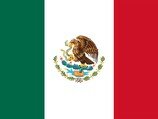The Segmental Info System
History of Cancun and the Mexican Caribbean
The fascinating history of the Mexican Caribbean region comes to life in the form of stories and ruins
Even though early civilizations flourished in the Yucatán more than 4,500 years ago, the region remained relatively unknown until the 20th century when the popular tourist destinations of Cancún and Cozumel were discovered by travelers from North America and Europe.
The Yucatán
The primitive people in the Yucatán region are believed to have foraged in the area around 11,000 B.C. There is not much evidence that points toward the existence and culture of these early people, and it would be thousands of years before the Mayans ventured into the region. The Mayans are believed to have moved into what is now the Quintana Roo region of Mexico, along the Yucatán, as early as 2500 B.C.
The Mayans would ultimately survive longer here than they would in many of their other territorial holdings but would face a struggle for survival as Spanish forces and settlers became increasingly present in the region. Mayan descendants would fight against the Spanish and Mexican government for independence in Quintana Roo until the end of the 19th century, with the Caste Wars during the middle of the century as the last major conflict.
Mayan culture would reach its height in the region during the Classic Period between 300 A.D. and 900 A.D. During this time, Mayan settlements and cities were built up at Cobá, Kohunlich, and Chichén Itzá. Many of the Mayans' achievements in science and culture were years ahead of their analogous counterparts in Europe. Around 900 A.D., the Maya power center would be fully shifted to the Yucatán region, with several clans establishing bases around both Uxmal, Chichén Itzá, and Mayapán. The civilization at Mayapán would rise to dominate the region for two centuries before being usurped by rival tribes. The Yucatán would fraction into territories with no centralized or unified leadership just as the Spanish would first foray into the region.
Christopher Columbus briefly encountered the Mayans during his fourth voyage in 1502. For the next 40 years, the Spanish attempts at subjugating the Mayans in the region would prove unsuccessful. In 1542, however, under Francisco de Montejo, the Spanish would gain control of the region, killing half a million Mayans and enslaving and Christianizing the rest in the forced labor encomienda system. As a result of fighting, slavery, and disease, the population of the Mayans would be drastically reduced over the next several hundred years.
Even though Mexico gained independence from Spain in 1821, fighting between the centralized government and the Mayan presence in the Yucatán would continue, culminating in the Caste War between 1842 and 1849. While resistance in the Quintana Roo region would continue into the 20th century, by 1850, the Mexican government would control the peninsula, and the Mayan population would be reduced to less than 10,000.
Between 1880 and 1940, the peninsula would become prosperous by using Mayan peasants to farm henequen, used to make items such as burlap bags. The collapse of this market would see the peninsula plunge into general impoverishment. It was not until the emergence of Cancún, Cozumel, Playa del Carmen, and other Mexican Caribbean sites as popular tourist destinations that areas of the region would gain some measure of prosperity. The region has taken several devastating hits from hurricanes, most recently from Hurricane Wilma in October 2005.
Cancún

The Mayans would abandon their sites in Cancún in the 15th century, leaving the island sparsely populated until 1968, when the Mexican government selected Cancún as the site of the country's primary tourist destination. Development of the area began immediately, with the island becoming well connected to the mainland. Scores of hotels and tourist establishments seemingly erupted from the ground to stand among the tropical greenery. Cancún began welcoming tourists from across the globe in 1974, the same year that Quintana Roo gained statehood. Since then, the area has become one of the most fabled Caribbean playgrounds.
Cozumel
The first structures were built up in Cozumel at San Gervasio in 300 A.D. The island would persistently serve the Mayans as an important religious and trade site until the Spanish would make contact with the island in 1528. Within 20 years, smallpox and genocide had essentially annihilated the entire Mayan population on the island.
Cozumel remained largely uninhabited until both Mayans and mestizos would flee to the island during the Caste War. The harvesting of chicle and the construction of a United States air base during World War II would support the local economy. After experiencing an economic drought for more than 15 years following the war, the island would gain international exposure in 1961 after Jacques Cousteau reported on Cozumel's stunning coral reefs and aquatic seascape. Tourism has since invigorated and fueled the local economy, and the island's population has grown exponentially over the past 40 years.
The histories of Cancún, Cozumel, and the Yucatán are steeped in rich Mayan culture and marred by European colonial practices. Despite periods of relative desertion and depression, the region has reaped the benefits of international tourism over the past 50 years.
Detailed Articles:
Help us improve! We welcome your corrections and suggestions.

-
Best Hotels For... >>
Dining Options
Entertainment /
NightlifeFamily Vacations
Swimming Pools
Tennis
Hotels by Star Rating >>
5 Star Hotels
4 Star Hotels
3 Star Hotels
2 Star Hotels
1 Star Hotels
More... >>
Camping & Eco-Tourism
Reservations
Search
-
More... >>
Golf
Sports
Tennis
Other Activities
-
More... >>
Customs
Driving
Electricity
Embassies
Health
Hours of Operation
Passports
Postal Services
Telephones
Tipping
Tourist Offices

_article.jpg)




_flag_thumbnail.jpg)


















_article_full_2.jpg)



